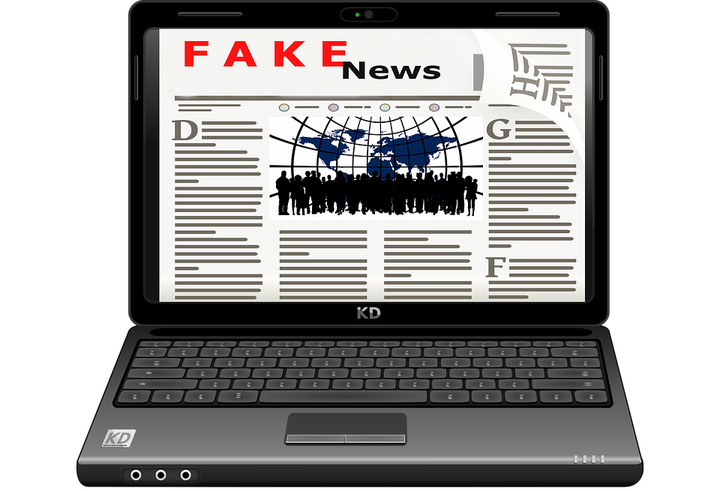By Brad Kayton and Richie Hecker
In the three months leading up the November election last year there were more engagement by readers on Facebook (clicks, shares, etc.) on the Top 20 fake news stories (8.7M) than on the Top 20 real news stories (7.4M), according to a recent analysis by Buzzfeed. 17 out of 20 of these top fake news stories were either pro-Trump or anti-Clinton. And the flood of it all was so extreme it was hard to know what was real and what was not, at least for a lot of people. People are outraged. Many have blamed the election outcome on fake news. Yet, fake news is as American as apple pie and dates back to the founding of our Republic. As Thomas Jefferson said, “an informed citizenry is the only true repository of the pubic will”. However, what happens when the citizenly is intentionally misinformed - would this count as the theft of the public will?

Fake News
The US practically invented Fake News - some historical context
It all started in Paris. The year, 1789. Ben Franklin was negotiating simultaneously the peace treaty with England and the terms of engagement moving forward with France. He created an entire fake newspaper, complete with fake advertisements, to influence both sides. This is the equivalent of a fake news site or Facebook page of today, though now the ads are real. Building on this trend, two of our other founding fathers, Thomas Jefferson and John Adams, so hated each other that they constantly attacked each other with false stories in print.
Fake news even started wars. In 1848, President Polk began the Mexican-American war after a claim that the Mexican army had illegally crossed the Rio Grande. The story ran in headlines for days across the country and was never proven and in the end turned out to be false. The father of the modern newspaper, William Randolph Hearst was famous for “Yellow journalism” or sensationalist stories, including fabricating atrocities with attention grabbing headlines, which led to the Spanish American War in 1895.
In the modern era, governments routinely engage in propaganda. Everyone does it. For example, the US paid a PR firm $540MM to make fake Al-Qaida videos in Iraq. Meanwhile, the Russian government for over forty years has run “Active Measures” campaigns meant to influence the course of world events. Active Measures campaigns were usually run through front organizations and included, mailing letter bombs allegedly from the Ku Klux Klan, and starting rumors that the 1969 moon landing was a hoax. (Was it! staged?)
Going to the present day, it’s gotten complicated. The Russian’s supposedly trolled the Internet, creating many Pro-Trump and Anti-Hilary Pages. RT America, the Russian online network mastered the art of Facebook traffic. They even did something democratic, hosting the first Green Party debate, which mainstream media did not cover. A recent Harvard study showed that China supposedly pays 2,000,000 people to leave comments on news sites and social media and creates 448MM comments per year. Comments amplify the virality of content, making it more influential.
But why is it so prevalent today?
Because it is so easy to publish content. Anyone can set up a Facebook page and start publishing stories. Facebook limits the branding from stories so all stories look similar. From the readers perspective the New York Times looks similar to a Fake News Facebook page, so over time, people believe both just the same. It is so easy to create Fake content so people create tons of it. In 2016 more than 80% of voting citizens had accounts on social media and, according to Pew Research (http://www.niemanlab.org/2016/05/pew-report-44-percent-of-u-s-adults-get-news-on-facebook/), and nearly half the adult population was getting their daily news from Facebook.
Why is fake news so effective?
The election itself was so polarizing that people didn’t want to hear other opinions. They just wanted to see news that supported their existing biases. When in doubt, people double-down on their existing opinions. Fake news is hyper-partisan for the headlines and therefore reinforces existing bias. According to Jonah Berger, Wharton professor and Author of the seminal book: Contagious: “People like things that support their beliefs, so as long as they don’t think a piece of news is obviously fake, they’re happy to pass it along, even without scrutinizing whether it might be true.”
Fake news is sensationalized content. It creates engagement and virality. It taps into emotion and people share, comment and share some more. Fake news is story telling and people like to hear grand tales. It captures their imagination.
The true value of Fake News
The value of fake news starts with advertising and leads into influence. Fake news, often drives more clicks than real news. This creates a perverse incentive for media companies to skip journalism in favor or sensationalism.
The Pew Research Center reports that newspaper ad revenues have fallen from about $45 billion in 2003 to less than $17 billion in 2014, while the “replacement” digital ad revenue in 2014 was only $3.5 billion. The loss in revenues requires expense cuts which lead to journalist layoffs that in turn lead to a vacuum of quality news. Filling the void is fake news via social media and fake web sites, enabling that content to have an influencing effect.
For example, in Romania, a 24-year old running a group called “End the Fed” managed to publish four of the top ten fake news stories during the election. He made a lot of money!
It is important to understand a distinction between fake news, partisan news and non-mainstream news. There are plenty of great sites that have strong reporting but are not in the mainstream and can get mislabeled as fake. Partisan sites report will stories with heavy spin and non-mainstream sites are regular properties, just off the beaten path., while Fake News sites just make stuff up.
Fake news sites are often run by enterprising entrepreneurs from around the world, including some teenagers from Europe, and guys banging on their keyboard in their boxers in America. The amazing thing is that these properties drive more traffic than their mainstream counterparts at a fraction of the cost.
Venture capitalists take note. An ex Russian spy, a Chinese government official and two guys in boxers from Tulsa step into a venture capitalists office. What happens next? They get funded and build the next BuzzFeed. Watch for this to happen! And heck they can just the same broadcast real news It would just be coming from the former purveyors of Fake News. See it gets confusing.
Why it matters?
US presidential elections very often come down to winning the hearts and minds of the undecided in swing states, and this was the case in 2016. Out of 128.8 million votes cast for Clinton and Trump in total, while Clinton won 2.8 million more votes, the election was decided by a mere 77,744 votes in three states (22,748 in Wisconsin, 10,704 in Michigan, 44,292 in Pennsylvania). Undecided voters may vote for whom they like more as a person and whom their trusted friends or family members are voting for, among other reasons. When a barrage of fake news is put out there about one candidate, and when your friends or relatives are sharing these stories with you, and t even if you know the stories are circumspect, it can have an affect on your psychology and thus of your opinions and ultimately, for some at least, on your vote. We’ll never know to what degree and if truly made the difference giving Trump the White House over Clinton, but in all three of those key rust belt states that Trump won it was by a margin of only a fraction of 1%. What do you think? Share your view #DreamFWD #FakeNews
*** In the future tune in for updates on the future of Fake News!
Brad Kayton is a serial entrepreneur, Board member of 1World Online, and lives in the Boston metro area. 1World is developing for online publishers a Blockchain mechanism to ensure "real" news, among other solutions they offer.
